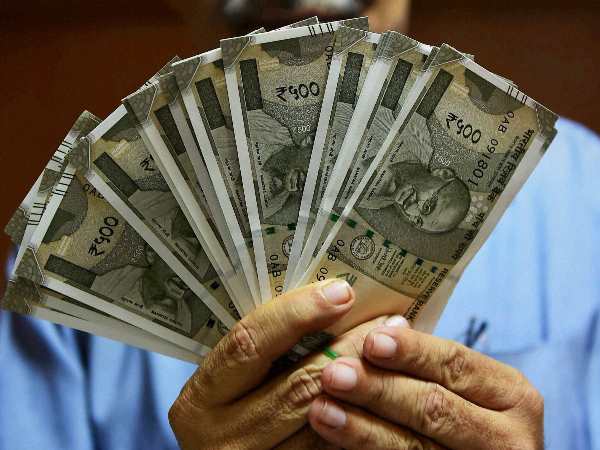5 Reasons Why India’s Economy Is Slowing Down
Recently, credit rating agency Crisil lowered its GDP (gross domestic product) forecast for India to 6.9 percent, which is 20 basis points lower than its previous projection. While the projection is slightly higher than the GDP growth of 6.8 percent seen last year, it is lower than the 14-year average of 7 percent.
In the same week, the World Bank also notified India's fall in GDP ranking on a global scale. In 2018, the country slipped two positions, falling below United Kingdom and France to become the seventh largest economy in the world.
The data comes at a time when India has a target of becoming a $5 trillion economy by 2024. World Bank's data showed that India's GDP in 2018 was $2.72 trillion.
In its report released this week, Crisil listed reasons for slowdown in the Indian economy. "GDP grew at an impressive 8.2 percent in fiscal 2017, the fastest in a decade. Then a cyclical downturn got triggered because of disruptions wrought by policy initiatives and reforms, and rising global uncertainty stemming from trade disputes," it said.
The report narrowed down to 5 things that affected the economy:

Disruptions and reforms
Crisil pointed out that towards the end of the financial year 2016-17, 3 major disruptions were seen leading to a slowdown,namely- demonetisation, US-China trade war and the Infrastructure Leasing and Financial Services (IL&FS) debacle.
"Fiscal 2017 was synonymous with demonetisation. Just as its effects were petering out, came the NBFC credit crunch in 2018, caused by the IL&FS crisis. By 2018-end, weakening global trade and GDP growth, led by US-China tariff wars, had caught up," it said.
Further, the new tax system-GST-was introduced in 2017, RBI adopted an inflation targeting framework and the Insolvency and Bankruptcy Code (IBC) was implemented.
"Reforms, in general, could be short-term disruptive and long-term supportive. We saw the first part happen around the GST. Though not inflationary, it did disrupt export growth in 2017, when global growth was at its highest since the financial crisis."
"In fiscal 2020, we expect to see continued streamlining of GST and IBC processes.That should gradually relay into greater efficiency and growth over the next few years," it added.

Monetary and fiscal policies
1. Since the adoption of RBI's target framework, inflation control became the focus in monetary policy, leading to high real interest rates.
2. As the government focused on lowering the fiscal deficit, it left very little room for it to increase spending so as to pump-prime the economy.
High fiscal deficits (at the centre as well as with the states) and real interest rates did not allow growth.
"In calendar 2019, though, monetary policy has turned growth-supportive. The Monetary Policy Committee slashed the repo rate thrice by 25 basis points (bps) each, and changed the stance to ‘accommodative'. However, anaemic transmission means growth will lift off with a lag. We expect the rate cuts to transmit by the second half of fiscal 2020. But the fiscal policy's ability to pumpprime the economy will remain constrained, owing to high debt levels," it said.

Global factors
In a gloomy global trade scene, export-led growth was not possible. Risks from the outcome of US-China trade war and Brexit outcome also brings immense uncertainty.
Moreover, "Crude prices were favourable in the first three years of National Democratic Alliance (NDA) I, which created tailwinds for India's growth, inflation, and fiscal deficit. However, that has moved up since fiscal 2018, reversing the advantage."

Crisis in the financial sector
Crisil report says that "The banking sector's NPA ratio worsened throughout the UPA-II term and is still quite high." Just as the NPA ratios started to improve, the NBFC stress build up, which spread faster due to interconnections with mutual funds, bank and corporate sector.
"For fiscal 2020, bank credit growth might improve somewhat, but NBFC credit looks subdued, despite the partial guarantee scheme announced in the Union Budget 2019-20," it said.

Distress in farm sector
Farm income lowered as agricultural terms of trade worsened. "Non-food inflation continued to surpass food inflation in the past two years, amounting to income transfers from rural to urban areas," the report said.
"Farm income could get a leg-up from the government's income transfer scheme, and a rise in food prices would boost the terms of trade," it projects.































